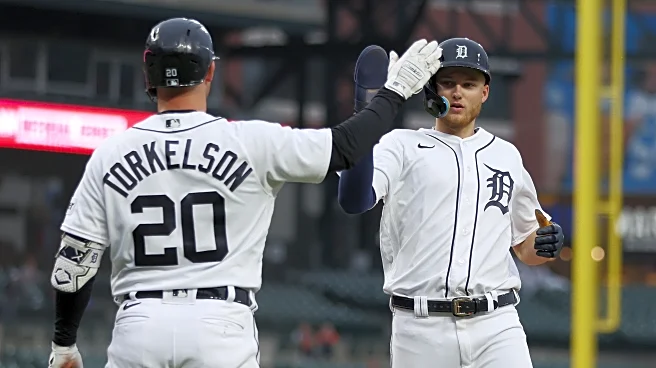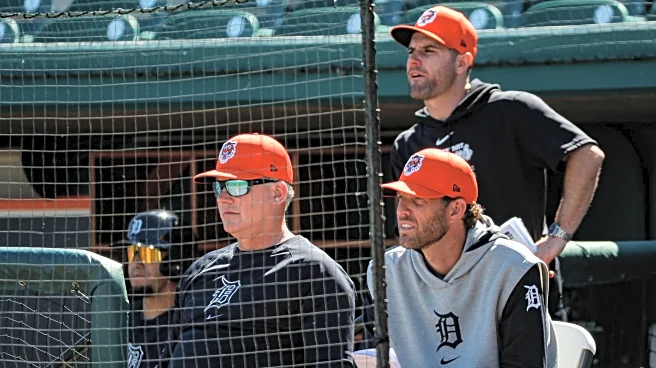What's Happening?
Kyle Finnegan, a right-handed pitcher, was traded from the Washington Nationals to the Detroit Tigers at the July 31 trade deadline. Since joining the Tigers, Finnegan has shifted from a traditional closer role to a multi-inning reliever, significantly altering his pitch mix. Previously, with the Nationals, Finnegan relied heavily on fastballs, but with the Tigers, he has increased his use of splitters, throwing them 72.7% of the time in a recent game against the Kansas City Royals. This change has contributed to his impressive performance, maintaining a 0.00 ERA over 13⅓ innings with the Tigers, compared to a 4.38 ERA with the Nationals. Finnegan's ability to pitch efficiently and his adaptability have made him a key player in the Tigers' bullpen, often stepping in during critical game moments.
Why It's Important?
Finnegan's transformation into a multi-inning reliever is significant for the Detroit Tigers as it enhances their bullpen flexibility and effectiveness. His ability to pitch multiple innings allows the team to manage high-pressure situations more effectively, potentially leading to more wins. This change also highlights the strategic adjustments teams can make post-trade to maximize player potential. For Finnegan, this role expansion could lead to increased career longevity and value, as multi-inning relievers are becoming more valuable in modern baseball. The Tigers benefit from his increased strikeout rate and ability to handle diverse game scenarios, which could be crucial in their pursuit of playoff contention.
What's Next?
As Finnegan continues to adapt to his new role, the Tigers may further refine his pitch strategy to optimize his performance. The team will likely monitor his endurance and effectiveness in multi-inning appearances to ensure he remains a reliable asset. Other teams may take note of Finnegan's success and consider similar strategic adjustments for their pitchers. The Tigers' management might also explore additional trades or player development strategies to bolster their bullpen further. Finnegan's performance could influence contract negotiations and his future role within the team.
Beyond the Headlines
Finnegan's shift to a multi-inning role reflects broader trends in baseball where traditional roles are evolving. This change challenges the conventional closer model, emphasizing versatility and adaptability. It also raises questions about how pitchers are trained and utilized, potentially influencing coaching strategies and player development. The success of such transitions could lead to a reevaluation of pitching roles across the league, impacting how teams build their rosters and approach game strategy.













